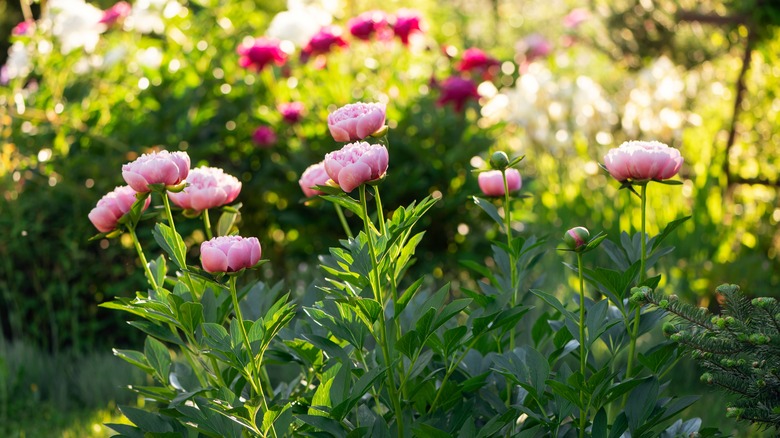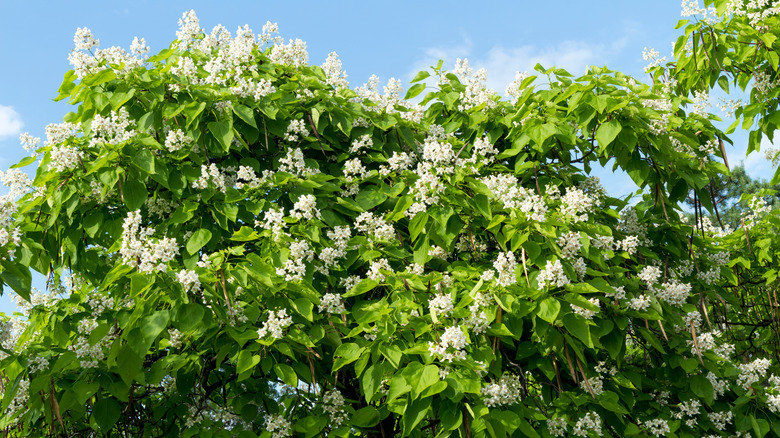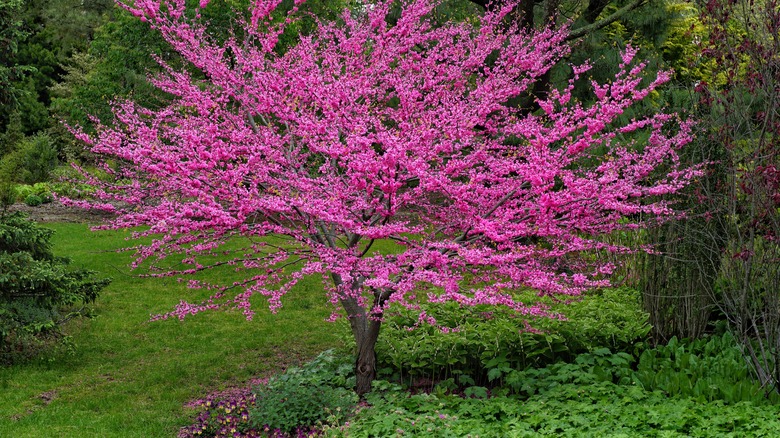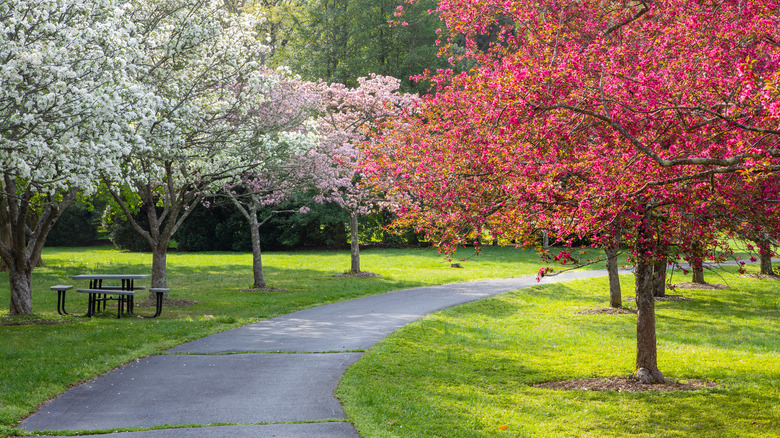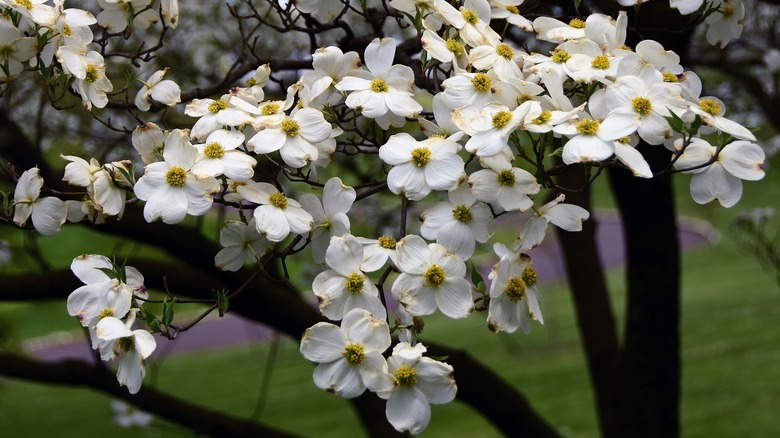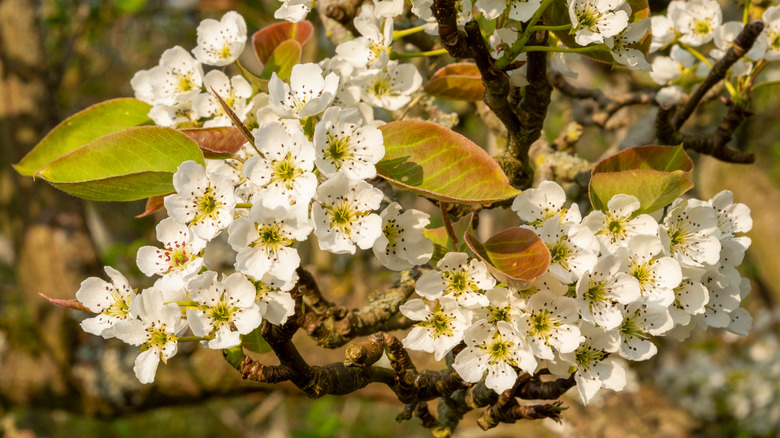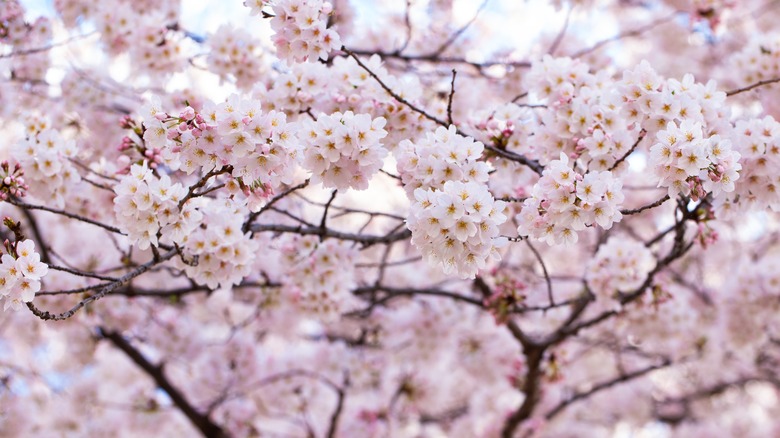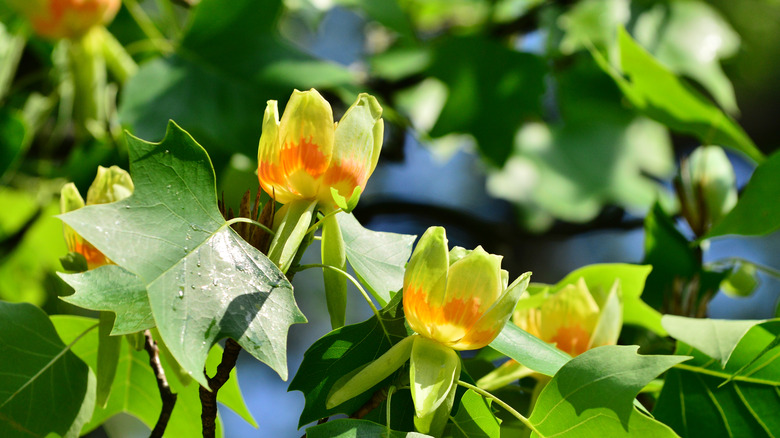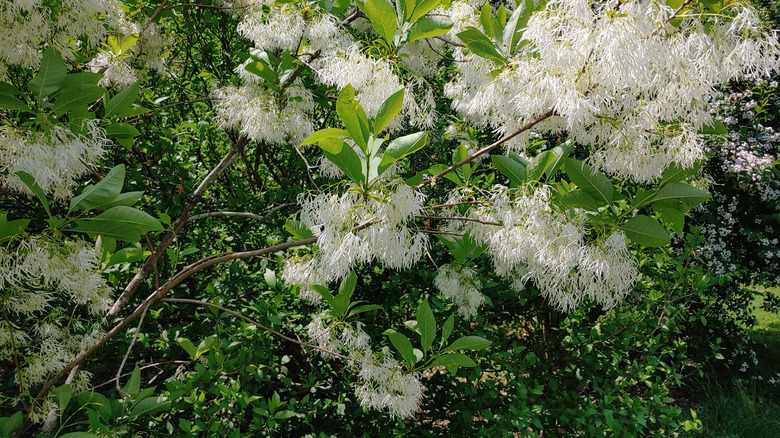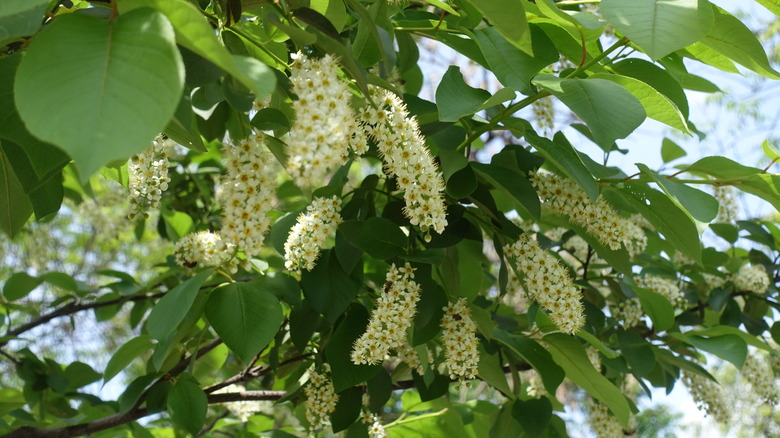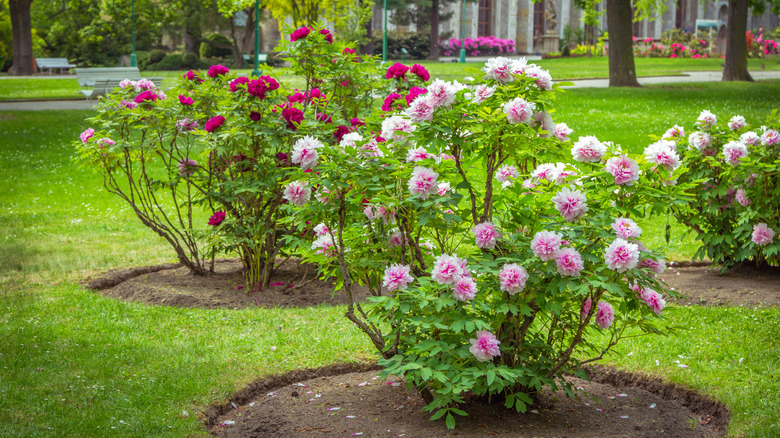10 Flowering Trees To Plant Peonies Under For A Gorgeous Garden Look, According To Our Master Gardener
In bloom, peonies certainly make a statement just by themselves, but combining them with flowering trees makes even more of a visual impact. There are a few ways to pair these beautiful blooms with trees. Available in white and shades of pink, red, and yellow, there are loads of complementary color combinations to pair peonies with flowering trees. If you want contrast, a bright red peony species would be beautiful with delicate white crabapple petals. For those all about color, bold yellow peonies paired with red dogwood make a stunning statement.
The challenge of getting the most out of your peony and perennial companion plants, like flowering trees, is finding options that bloom at the same time. Some trees bloom early in the season, like redbuds, while others bloom later. The same is true for peonies — each species has a specific bloom time. And, of course, your region and climate will determine when everything blooms since peonies and trees will produce flowers much earlier in southern states than they do further north. Here are some flowering trees that pair well with peonies to create a gorgeous garden.
Native Catalpa
Although you'll want to avoid invasive catalpa tree species, there are two native options that make a beautiful addition to any outdoor space. Choose from northern catalpa (Catalpa speciosa) or southern catalpa (Catalpa bignonioides), depending on your region. These trees are covered with beautiful white blooms in May and June when many types of peonies produce open flowers. Catalpas can be a bit messy, so plant them away from walkways or your porch to make clean-up easier.
Eastern redbud
I'm pretty sure I put the eastern redbud tree (Cercis canadensis) on every list I make because it is one of my favorites and seems to serve almost every purpose. It's pretty when it blooms in the spring, after it produces heart-shaped leaves in the summer, and when it changes colors in the fall. It's also super easy to successfully grow an eastern redbud. This gorgeous native provides nectar for early-emerging beneficial insects and creates a gorgeous red display with tiny red blooms. An early-blooming peony would be the perfect companion for this stunning tree.
Crabapple
With ten native species of crabapple and many more cultivated varieties, there is certainly an option that will pair nicely with peonies in your landscape. These lovely trees feature white or pink blooms that bloom from early to late spring, depending on the variety and location. While their blooms are gorgeous and fragrant, their job is not done when those flowers fade. Crabapples produce loads of tiny fruits beloved by birds, so you might consider this tree a must-have if you're a backyard birder.
Dogwood
The native dogwood tree (Cornus forida), also known as the flowering dogwood, grows from the most southern to most northern regions in the U.S.. While I love to encourage gardeners to add native plants to their landscape, there's nothing wrong with selecting a species that has been cultivated for beauty. Flowering dogwood features white blooms, while other cultivars offer beautiful tones of pink and red.
Asian pear
If you want to make the most of your space by combining beautiful spring blooms with a wonderful fall harvest, consider adding an Asian pear (Pyrus pyrifolia) tree to your landscape. It's important to distinguish this edible pear, which is not invasive, from the very invasive Callery or Bradford (Pyrus calleryana) pear, a stinky tree you should avoid. While there are no pear trees native to the U.S., Asian pear trees have not naturalized here, so they won't grow wild or negatively affect the ecosystem. Asian pears produce clusters of pretty white blooms in late spring and tasty fall fruit.
Yoshino cherry
Every spring, people flock to Washington, D.C., to enjoy the cherry trees in bloom. Among that stunning display are Yoshino cherry trees (Prunus x yedoensis), a native of Japan that was brought to the U.S. in 1902. These trees feature a cloud of light pink blooms in early spring, which give way to tiny fruits. Yoshino cherry flowers combine with early blooming peonies for a breathtaking view while providing early-season nectar for beneficial insects. Later in the season, the fruits attract wildlife, including gorgeous cedar waxwings and other fruit-loving birds.
Tulip poplar
The tulip poplar tree (Liriodendron tulipifera) is known by many names, including fiddle tree and yellow-poplar. Its common name, tulip poplar, comes from its unique tulip-shaped flowers. This may be the most dynamic tree on this list because it's the only one that features gorgeous, large yellow blooms that attract bees, butterflies, and hummingbirds in the spring while rewarding you again in the fall with stunning foliage. Although it's called a tulip poplar, it's actually in the magnolia family. As such, tulip poplars can reach up to 150 feet tall, but there are some smaller cultivated options.
Fringe tree
A cousin of the olive tree, the American fringe tree (Chionanthus virginicus) is a native of the U.S. that offers unique blooms with long, thin petals resembling fringe. This lovely tree is an excellent choice if you're tight on space or want a small tree close to your house. The American fringe tree only reaches about 20 feet tall at maturity, and can be grown as a multi-stemmed bush or pruned into a single stem as a tree. Since it blooms well in partial shade, it also pairs well with large shade trees.
Native black cherry
The blooms of the native black cherry tree (Prunus serotina) may be subtle, but paired with showy flowers, they provide delicate background accessories. These trees produce elongated clusters of tiny white blooms in late spring, making it a good option to pair with late-blooming peonies. Once those blooms die back, the tree produces small cherries from which people have historically made jelly and wine. Birds and wildlife also love its mature fruits. This tree is particularly beneficial to the ecosystem since its blooms support native bees, and it's the host plant to 11 types of moths and butterflies.
Tree peonies
Last but certainly not least, I had to add tree peonies (Paeonia suffruticosa) to this list. Calling this plant a "tree" is generous since they only reach about 5 feet tall, but they can be pruned into an attractive single-stemmed tree shape. The blooms of this mini-tree are similar in size, shape, and color to their smaller cousins. The primary difference between these two types of peonies, besides the maximum height, is that tree peonies have woody stems that remain above ground year-round, while herbaceous peonies come back from the roots each year.
